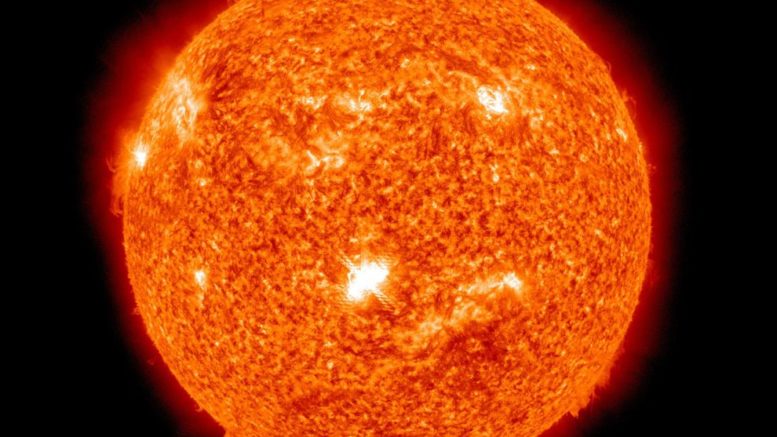Although morbid, the sun is like every other star as it will finish its lifecycle in the distant future. However, there is no risk for any changes to the star that provides the Earth with energy in the future in terms of human lifespans. If any remnants of humanity still exist in the solar system, this will be an amazing opportunity for scientific discovery.
How old is our sun?
Common knowledge says that the age of the sun is 4.603 billion years. With an additional 5 billion years left in its lifecycle, there is no concern for our immediate future. This means that it is roughly 1/2 way through its lifespan, so there is not much risk of death during any human lifespan at this time.
Formation
Many scientists think the sun and the rest of the solar system formed from a giant, rotating cloud of gas and dust known as the solar nebula. As the nebula collapsed because of its gravity, it spun faster and flattened into a disk. Most of the material was pulled toward the center to form the sun. If you’re curious about the formation of the solar system, check out this article.
How will the sun die?
In summary, the sun will exhaust its supply of hydrogen, which will then lead to the sun expanding to become a red giant and then tear itself to pieces and then condense into a white dwarf.
How Will Death Affect Planets?
As the Sun burns through its supply of hydrogen fuel, it gets hotter and burns the remaining fuel even faster. As a result, the Sun is growing brighter at a rate of ten percent every 1.1 billion years. In about 600 million years, the Sun’s brightness will have disrupted the Earth’s carbon cycle to the point where trees and forests will no longer be able to survive; and in around 800 million years, the Sun will have killed all complex life on the Earth’s surface and in the oceans. In 1.1 billion years’ time, the Sun’s increased radiation output will cause its circumstellar habitable zone to move outwards, making the Earth’s surface too hot for liquid water to exist there naturally. At this point, all life will be reduced to single-celled organisms. Evaporation of water, a potent greenhouse gas, from the oceans’ surface could accelerate temperature increase, potentially ending all life on Earth even sooner. During this time, it is possible that as Mars’s surface temperature gradually rises, carbon dioxide and water currently frozen under the surface regolith will release into the atmosphere, creating a greenhouse effect that will heat the planet until it achieves conditions parallel to Earth today, providing a potential future abode for life.
As the Sun expands, it will swallow the planets Mercury and Venus. The fate of the Earth isn’t certain. At the end cycle, the loss of the sun’s mass could send the orbits of the surviving planets into chaos, causing some to collide, others to be ejected from the Solar System, and still others to be torn apart by tidal interactions. Afterwards, all that will remain of the Sun is a white dwarf, an extraordinarily dense object, 54% its original mass but only the size of the Earth. Initially, this white dwarf may be 100 times as luminous as the Sun is now.
References
https://www.space.com/22471-red-giant-stars.html
https://www.sciencealert.com/what-will-happen-after-the-sun-dies-planetary-nebula-solar-system

Be the first to comment on "Future Of The Sun"